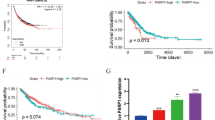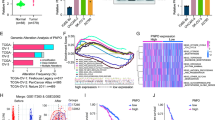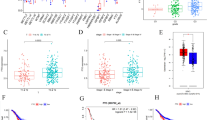Abstract
Cisplatin is recommended as a first-line chemotherapeutic agent against advanced non-small cell lung cancer (NSCLC), but acquired resistance substantially limits its clinical efficacy. Recently, DNA methylation has been identified as an essential contributor to chemoresistance. However, the precise DNA methylation regulatory mechanism of cisplatin resistance remains unclear. Here, we found that nicotinamide nucleotide transhydrogenase (NNT) was silenced by DNA hypermethylation in cisplatin resistance A549 (A549/DDP) cells. Also, the DNA hypermethylation of NNT was positively correlated to poor prognosis in NSCLC patients. Overexpression of NNT in A549/DDP cells could reduce their cisplatin resistance, and also suppressed their tumor malignancy such as cell proliferation and clone formation. However, NNT enhanced sensitivity of A549/DDP cells to cisplatin had little to do with its function in mediating NADPH and ROS level, but was mainly because NNT could inhibit protective autophagy in A549/DDP cells. Further investigation revealed that NNT could decrease NAD+ level, thereby inactivate SIRT1 and block the autophagy pathway, while re-activation of SIRT1 through NAD+ precursor supplementation could antagonize this effect. In addition, targeted demethylation of NNT CpG island via CRISPR/dCas9-Tet1 system significantly reduced its DNA methylation level and inhibited the autophagy and cisplatin resistance in A549/DDP cells. Thus, our study found a novel chemoresistance target gene NNT, which played important roles in cisplatin resistance of lung cancer cells. Our findings also suggested that CRISPR-based DNA methylation editing of NNT could be a potential therapeutics method in cisplatin resistance of lung cancer.







Similar content being viewed by others
References
Anglim PP, Alonzo TA, Laird-Offringa IA (2008) DNA methylation-based biomarkers for early detection of non-small cell lung cancer: an update. Mol Cancer 7:81. https://doi.org/10.1186/1476-4598-7-81
Brocks D, Assenov Y, Minner S, Bogatyrova O, Simon R, Koop C, Oakes C, Zucknick M, Lipka DB, Weischenfeldt J et al (2014) Intratumor DNA methylation heterogeneity reflects clonal evolution in aggressive prostate cancer. Cell Rep 8:798–806. https://doi.org/10.1016/j.celrep.2014.06.053
Chalitchagorn K, Shuangshoti S, Hourpai N, Kongruttanachok N, Tangkijvanich P, Thong-ngam D, Voravud N, Sriuranpong V, Mutirangura A (2004) Distinctive pattern of LINE-1 methylation level in normal tissues and the association with carcinogenesis. Oncogene 23:8841–8846. https://doi.org/10.1038/sj.onc.1208137
Christman JK (2002) 5-Azacytidine and 5-aza-2′-deoxycytidine as inhibitors of DNA methylation: mechanistic studies and their implications for cancer therapy. Oncogene 21:5483–5495. https://doi.org/10.1038/sj.onc.1205699
Cong L, Ran FA, Cox D, Lin S, Barretto R, Habib N, Hsu PD, Wu X, Jiang W, Marraffini LA et al (2013) Multiplex genome engineering using CRISPR/cas systems. Science 339:819–823. https://doi.org/10.1126/science.1231143
Dawson MA, Kouzarides T (2012) Cancer epigenetics: from mechanism to therapy. Cell 150:12–27. https://doi.org/10.1016/j.cell.2012.06.013
Dong N, Shi L, Wang DC, Chen C, Wang X (2017) Role of epigenetics in lung cancer heterogeneity and clinical implication. Semin Cell Dev Biol 64:18–25. https://doi.org/10.1016/j.semcdb.2016.08.029
Duma N, Santana-Davila R, Molina JR (2019) Non-small cell lung cancer: epidemiology, screening, diagnosis, and treatment. Mayo Clin Proc 94:1623–1640. https://doi.org/10.1016/j.mayocp.2019.01.013
Frangoul H, Altshuler D, Cappellini MD, Chen YS, Domm J, Eustace BK, Foell J, de la Fuente J, Grupp S, Handgretinger R et al (2021) CRISPR-Cas9 Gene editing for sickle cell disease and β-thalassemia. N Engl J Med 384:252–260. https://doi.org/10.1056/NEJMoa2031054
Gameiro PA, Laviolette LA, Kelleher JK, Iliopoulos O, Stephanopoulos G (2013) Cofactor balance by nicotinamide nucleotide transhydrogenase (NNT) coordinates reductive carboxylation and glucose catabolism in the tricarboxylic acid (TCA) cycle. J Biol Chem 288:12967–12977. https://doi.org/10.1074/jbc.M112.396796
Garten A, Grohmann T, Kluckova K, Lavery GG, Kiess W, Penke M (2019) Sorafenib-induced apoptosis in hepatocellular carcinoma is reversed by SIRT1. Int J Mol Sci. https://doi.org/10.3390/ijms20164048
Gillmore JD, Gane E, Taubel J, Kao J, Fontana M, Maitland ML, Seitzer J, O’Connell D, Walsh KR, Wood K et al (2021) CRISPR-cas9 in vivo gene editing for transthyretin amyloidosis. N Engl J Med 385:493–502. https://doi.org/10.1056/NEJMoa2107454
Guo R, Wu G, Li H, Qian P, Han J, Pan F, Li W, Li J, Ji F (2013) Promoter methylation profiles between human lung adenocarcinoma multidrug resistant A549/cisplatin (A549/DDP) cells and its progenitor A549 cells. Biol Pharm Bull 36:1310–1316. https://doi.org/10.1248/bpb.b13-00153
Hao JJ, Lin DC, Dinh HQ, Mayakonda A, Jiang YY, Chang C, Jiang Y, Lu CC, Shi ZZ, Xu X et al (2016) Spatial intratumoral heterogeneity and temporal clonal evolution in esophageal squamous cell carcinoma. Nat Genet 48:1500–1507. https://doi.org/10.1038/ng.3683
Heller G, Zielinski CC, Zöchbauer-Müller S (2010) Lung cancer: from single-gene methylation to methylome profiling. Cancer Metastasis Rev 29:95–107. https://doi.org/10.1007/s10555-010-9203-x
Jiang L, Shestov AA, Swain P, Yang C, Parker SJ, Wang QA, Terada LS, Adams ND, McCabe MT, Pietrak B et al (2016) Reductive carboxylation supports redox homeostasis during anchorage-independent growth. Nature 532:255–258. https://doi.org/10.1038/nature17393
Jinek M, Chylinski K, Fonfara I, Hauer M, Doudna JA, Charpentier E (2012) A programmable dual-RNA-guided DNA endonuclease in adaptive bacterial immunity. Science 337:816–821. https://doi.org/10.1126/science.1225829
Kiss T, Nyúl-Tóth Á, Balasubramanian P, Tarantini S (2020) Nicotinamide mononucleotide (NMN) supplementation promotes neurovascular rejuvenation in aged mice: transcriptional footprint of SIRT1 activation, mitochondrial protection, anti-inflammatory, and anti-apoptotic effects. GeroScience 42:527–546. https://doi.org/10.1007/s11357-020-00165-5
Kleih M, Böpple K, Dong M, Gaißler A, Heine S, Olayioye MA, Aulitzky WE, Essmann F (2019) Direct impact of cisplatin on mitochondria induces ROS production that dictates cell fate of ovarian cancer cells. Cell Death Dis 10:851. https://doi.org/10.1038/s41419-019-2081-4
Klionsky DJ, Petroni G, Amaravadi RK, Baehrecke EH, Ballabio A (2021) Autophagy in major human diseases. The EMBO J 40:e108863. https://doi.org/10.15252/embj.2021108863
Klughammer J, Kiesel B, Roetzer T, Fortelny N, Nemc A, Nenning KH, Furtner J, Sheffield NC, Datlinger P, Peter N et al (2018) The DNA methylation landscape of glioblastoma disease progression shows extensive heterogeneity in time and space. Nat Med 24:1611–1624. https://doi.org/10.1038/s41591-018-0156-x
Law LW, Ting RC, Leckband E (1967) Prevention of virus-induced neoplasms in mice through passive transfer of immunity by sensitized syngeneic lymphoid cells. Proc Natl Acad Sci USA 57:1068–1075. https://doi.org/10.1073/pnas.57.4.1068
Levy JMM, Towers CG, Thorburn A (2017) Targeting autophagy in cancer. Nat Rev Cancer 17:528–542. https://doi.org/10.1038/nrc.2017.53
Li H, Shen L, Lv T, Wang R, Zhang N, Peng H, Diao W (2019a) Salidroside attenuates dextran sulfate sodium-induced colitis in mice via SIRT1/FoxOs signaling pathway. Eur J Pharmacol 861:172591. https://doi.org/10.1016/j.ejphar.2019.172591
Li X, Zhou Y, Li Y, Yang L, Ma Y, Peng X, Yang S, Liu J, Li H (2019b) Autophagy: a novel mechanism of chemoresistance in cancers. Biomed Pharmacother 119:109415. https://doi.org/10.1016/j.biopha.2019b
Li W, Qin X, Wang B (2020) MiTF is associated with chemoresistance to cisplatin in a549 lung cancer cells via modulating lysosomal biogenesis and autophagy. Cancer Manag Res 12:6563–6573. https://doi.org/10.2147/cmar.s255939
Lim ZF, Ma PC (2019) Emerging insights of tumor heterogeneity and drug resistance mechanisms in lung cancer targeted therapy. J Hematol Oncol 12:134. https://doi.org/10.1186/s13045-019-0818-2
Lin DC, Mayakonda A, Dinh HQ, Huang P, Lin L, Liu X, Ding LW, Wang J, Berman BP, Song EW et al (2017) Genomic and epigenomic heterogeneity of hepatocellular carcinoma. Can Res 77:2255–2265. https://doi.org/10.1158/0008-5472.can-16-2822
Liu XS, Wu H, Ji X, Stelzer Y, Wu X, Czauderna S, Shu J, Dadon D, Young RA, Jaenisch R (2016) Editing DNA methylation in the mammalian genome. Cell 167:233-247.e217. https://doi.org/10.1016/j.cell.2016.08.056
Liu XS, Wu H, Krzisch M, Wu X, Graef J, Muffat J, Hnisz D, Li CH, Yuan B, Xu C et al (2018) Rescue of Fragile X syndrome neurons by DNA methylation editing of the FMR1 gene. Cell 172:979-992.e976. https://doi.org/10.1016/j.cell.2018.01.012
Liu A, Wu Q, Peng D, Ares I, Anadón A (2020) A novel strategy for the diagnosis, prognosis, treatment, and chemoresistance of hepatocellular carcinoma: DNA methylation. Med Res Rev 40:1973–2018. https://doi.org/10.1002/med.21696
Mali P, Yang L, Esvelt KM, Aach J, Guell M, DiCarlo JE, Norville JE, Church GM (2013) RNA-guided human genome engineering via Cas9. Science 339:823–826. https://doi.org/10.1126/science.1232033
Mazor T, Pankov A, Johnson BE, Hong C, Hamilton EG, Bell RJA, Smirnov IV, Reis GF, Phillips JJ, Barnes MJ et al (2015) DNA methylation and somatic mutations converge on the cell cycle and define similar evolutionary histories in brain tumors. Cancer Cell 28:307–317. https://doi.org/10.1016/j.ccell.2015.07.012
Miller M, Hanna N (2021) Advances in systemic therapy for non-small cell lung cancer. BMJ (clinical Research Ed) 375:n2363. https://doi.org/10.1136/bmj.n2363
Momparler RL (2005) Epigenetic therapy of cancer with 5-aza-2′-deoxycytidine (decitabine). Semin Oncol 32:443–451. https://doi.org/10.1053/j.seminoncol.2005.07.008
Nesci S, Trombetti F, Pagliarani A (2020) Nicotinamide nucleotide transhydrogenase as a sensor of mitochondrial biology. Trends Cell Biol 30:1–3. https://doi.org/10.1016/j.tcb.2019.11.001
Nickel AG, von Hardenberg A, Hohl M, Löffler JR, Kohlhaas M, Becker J, Reil JC, Kazakov A, Bonnekoh J, Stadelmaier M et al (2015) Reversal of mitochondrial transhydrogenase causes oxidative stress in heart failure. Cell Metab 22:472–484. https://doi.org/10.1016/j.cmet.2015.07.008
Nuñez JK, Chen J, Pommier GC, Cogan JZ, Replogle JM, Adriaens C, Ramadoss GN, Shi Q, Hung KL, Samelson AJ et al (2021) Genome-wide programmable transcriptional memory by CRISPR-based epigenome editing. Cell 184:2503-2519.e2517. https://doi.org/10.1016/j.cell.2021.03.025
Pan X, Chen Y, Shen Y, Tantai J (2019) Knockdown of TRIM65 inhibits autophagy and cisplatin resistance in A549/DDP cells by regulating miR-138-5p/ATG7. Cell Death Dis 10:429. https://doi.org/10.1038/s41419-019-1660-8
Santos LRB, Muller C, de Souza AH, Takahashi HK, Spégel P, Sweet IR, Chae H, Mulder H, Jonas JC (2017) NNT reverse mode of operation mediates glucose control of mitochondrial NADPH and glutathione redox state in mouse pancreatic β-cells. Mol Metab 6:535–547. https://doi.org/10.1016/j.molmet.2017.04.004
Shen DW, Pouliot LM, Hall MD, Gottesman MM (2012) Cisplatin resistance: a cellular self-defense mechanism resulting from multiple epigenetic and genetic changes. Pharmacol Rev 64:706–721. https://doi.org/10.1124/pr.111.005637
Siegel RL, Miller KD (2021) Cancer statistics, 2021. CA A Cancer J Clin 71:7–33. https://doi.org/10.3322/caac.21654
Siegel R, Ma J, Zou Z, Jemal A (2014) Cancer statistics, 2014. A Cancer J Clin 64:9–29. https://doi.org/10.3322/caac.21208
Stepper P, Kungulovski G, Jurkowska RZ, Chandra T, Krueger F, Reinhardt R, Reik W, Jeltsch A, Jurkowski TP (2017) Efficient targeted DNA methylation with chimeric dCas9-Dnmt3a-Dnmt3L methyltransferase. Nucleic Acids Res 45:1703–1713. https://doi.org/10.1093/nar/gkw1112
Sun R, Du C, Li J, Zhou Y, Xiong W, Xiang J, Liu J, Xiao Z, Fang L, Li Z (2021) Systematic investigation of DNA methylation associated with platinum chemotherapy resistance across 13 cancer types. Front Pharmacol 12:616529. https://doi.org/10.3389/fphar.2021.616529
Szklarczyk D, Franceschini A, Wyder S, Forslund K, Heller D, Huerta-Cepas J, Simonovic M, Roth A, Santos A, Tsafou KP et al (2015) STRING v10: protein-protein interaction networks, integrated over the tree of life. Nucleic Acids Res 43:D447-452. https://doi.org/10.1093/nar/gku1003
Tully E, Bharti S, Woo J, Bhujwalla Z, Gabrielson E (2021) Biguanide drugs enhance cytotoxic effects of cisplatin by depleting aspartate and NAD+ in sensitive cancer cells. Cancer Biol Ther 22:579–586. https://doi.org/10.1080/15384047.2021.1982599
Vojta A, Dobrinić P, Tadić V, Bočkor L, Korać P, Julg B, Klasić M, Zoldoš V (2016) Repurposing the CRISPR-Cas9 system for targeted DNA methylation. Nucleic Acids Res 44(12):5615–5628. https://doi.org/10.1093/nar/gkw159
Wang L, Xu C, Johansen T (2021a) SIRT1-a new mammalian substrate of nuclear autophagy. Autophagy 17:593–595. https://doi.org/10.1080/15548627.2020.1860541
Wang M, Herbst RS, Boshoff C (2021b) Toward personalized treatment approaches for non-small-cell lung cancer. Nat Med 27:1345–1356. https://doi.org/10.1038/s41591-021-01450-2
Wang XW, Guo QQ, Yu Y, Zhou TT, Zhang SY, Wang Z, Liu JW, Tang J, Jiang XY, Wang SS et al (2022) The deacetylation of Foxk2 by Sirt1 reduces chemosensitivity to cisplatin. J Cell Mol Med 26:491–506. https://doi.org/10.1111/jcmm.17107
Ward NP, Kang YP, Falzone A, Boyle TA, DeNicola GM (2020) Nicotinamide nucleotide transhydrogenase regulates mitochondrial metabolism in NSCLC through maintenance of Fe–S protein function. J Exp Med. https://doi.org/10.1084/jem.20191689
Wilk C, Effenberg L, Abberger H, Steenpass L, Hansen W, Zeschnigk M, Kirschning C, Buer J, Kehrmann J (2022) CRISPR/Cas9-mediated demethylation of FOXP3-TSDR toward Treg-characteristic programming of Jurkat T cells. Cell Immunol 371:104471. https://doi.org/10.1016/j.cellimm.2021.104471
Wilting RH, Dannenberg JH (2012) Epigenetic mechanisms in tumorigenesis, tumor cell heterogeneity and drug resistance. Drug Resist Updat 15:21–38. https://doi.org/10.1016/j.drup.2012.01.008
Xu C, Wang L (2020) SIRT1 is downregulated by autophagy in senescence and ageing. Nat Cell Biol 22:1170–1179. https://doi.org/10.1038/s41556-020-00579-5
Xu X, Tan X, Tampe B (2018) High-fidelity CRISPR/Cas9- based gene-specific hydroxymethylation rescues gene expression and attenuates renal fibrosis. Nat Commun 9:3509. https://doi.org/10.1038/s41467-018-05766-5
Xu Y, Lai Y, Weng H, Tan L, Li Y, Chen G, Luo X, Ye Y (2019) MiR-124 sensitizes cisplatin-induced cytotoxicity against CD133(+) hepatocellular carcinoma cells by targeting SIRT1/ROS/JNK pathway. Aging 11:2551–2564. https://doi.org/10.1632/aging.101876
Xu R, Luo X, Ye X, Li H, Liu H, Du Q, Zhai Q (2021) SIRT1/PGC-1α/PPAR-γ correlate with hypoxia-induced chemoresistance in non-small cell lung cancer. Front Oncol 11:682762. https://doi.org/10.3389/fonc.2021.682762
Yan X, Qu X, Tian R, Xu L, Jin X, Yu S, Zhao Y, Ma J, Liu Y, Sun L et al (2020) Hypoxia-induced NAD(+) interventions promote tumor survival and metastasis by regulating mitochondrial dynamics. Life Sci 259:118171. https://doi.org/10.1016/j.lfs.2020.118171
Yin F, Sancheti H, Cadenas E (2012) Silencing of nicotinamide nucleotide transhydrogenase impairs cellular redox homeostasis and energy metabolism in PC12 cells. Biochem Biophys Acta 1817:401–409. https://doi.org/10.1016/j.bbabio.2011.12.004
Ying W (2008) NAD+/NADH and NADP+/NADPH in cellular functions and cell death: regulation and biological consequences. Antioxid Redox Signal 10:179–206. https://doi.org/10.1089/ars.2007.1672
Zhang YW, Zheng Y, Wang JZ, Lu XX, Wang Z, Chen LB, Guan XX, Tong JD (2014) Integrated analysis of DNA methylation and mRNA expression profiling reveals candidate genes associated with cisplatin resistance in non-small cell lung cancer. Epigenetics 9:896–909. https://doi.org/10.4161/epi.28601
Zhang N, Yang GQ, Shao XM, Wei L (2016) GAS5 modulated autophagy is a mechanism modulating cisplatin sensitivity in NSCLC cells. Eur Rev Med Pharmacol Sci 20:2271–2277
Acknowledgements
This work was supported by the Chinese National Natural Science Foundation (81872656) and the Open Projects Program of Guangdong Provincial Key Laboratory of Occupational Disease Prevention and Treatment (2017B030314152).
Funding
National Natural Science Foundation of China, 81872656, Daochuan Li, The Open Projects Program of Guangdong Provincial Key Laboratory of Occupational Disease Prevention and Treatment, 2017B030314152, Daochuan Li
Author information
Authors and Affiliations
Contributions
DL, CX designed the study and wrote the manuscript. CX, SJ and XM conducted the experiments of the study. ZJ, YP and SC contributed reagents or analytic tools. XL, LZ and HZ Performed data analysis. XX, LC, QW, WF and WC revised it critically. DL, WC sponsored the study and reviewed the manuscript.
Corresponding author
Ethics declarations
Conflict of interest
The authors declare that they have no conflicts of interest.
Additional information
Publisher's Note
Springer Nature remains neutral with regard to jurisdictional claims in published maps and institutional affiliations.
Supplementary Information
Below is the link to the electronic supplementary material.
Rights and permissions
Springer Nature or its licensor (e.g. a society or other partner) holds exclusive rights to this article under a publishing agreement with the author(s) or other rightsholder(s); author self-archiving of the accepted manuscript version of this article is solely governed by the terms of such publishing agreement and applicable law.
About this article
Cite this article
Xu, C., Jiang, S., Ma, X. et al. CRISPR-based DNA methylation editing of NNT rescues the cisplatin resistance of lung cancer cells by reducing autophagy. Arch Toxicol 97, 441–456 (2023). https://doi.org/10.1007/s00204-022-03404-0
Received:
Accepted:
Published:
Issue Date:
DOI: https://doi.org/10.1007/s00204-022-03404-0




